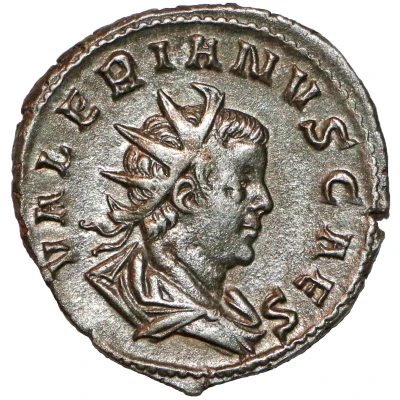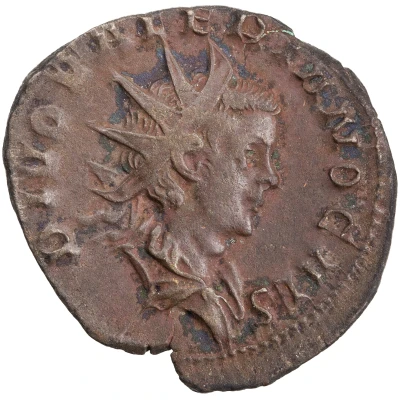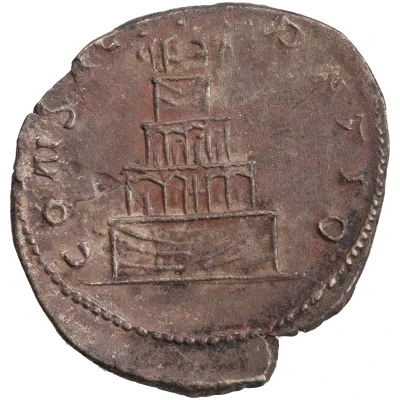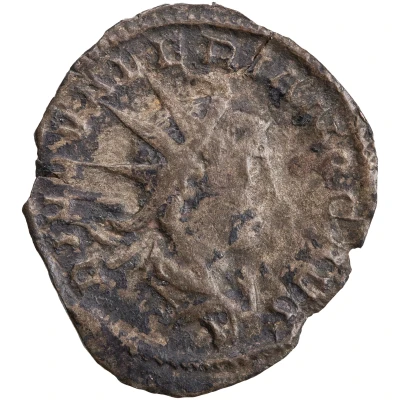
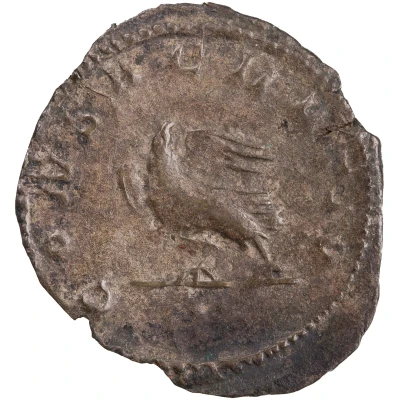

© American Numismatic Society (ANS)
Antoninianus - Valerianus II CONSACRATIO
| Silver | 2.1 g | 22.5 mm |
| Issuer | Rome › Roman Empire (27 BC - 395 AD) |
|---|---|
| Emperor | Valerian (Publius Licinius Valerianus) (253-260) Gallienus (Publius Licinius Egnatius Gallienus) (253-268) |
| Type | Standard circulation coin |
| Years | 257-258 |
| Value | Antoninianus (1) |
| Currency | Antoninianus, Reform of Caracalla (AD 215 – 301) |
| Composition | Silver |
| Weight | 2.1 g |
| Diameter | 22.5 mm |
| Shape | Round (irregular) |
| Technique | Hammered |
| Demonetized | Yes |
| Updated | 2024-10-05 |
| Numista | N#289803 |
|---|---|
| Rarity index | 100% |
Reverse
Eagle, standing right or left, sometimes on globe.
Script: Latin
Lettering: CONSACRATIO
Translation: Consecration.
Comment
Mass varies: 1.93–2.34 g;Diameter varies: 20–24.8 mm;
Example of this type:
American Numismatic Society (ANS)
Source:
Online Coins of the Roman Empire (OCRE)
Interesting fact
The Antoninianus coinage was introduced by the Roman Emperor Caracalla in 215 AD as a replacement for the denarius, which had been the standard Roman coin for over 400 years. The Antoninianus was made of silver and had a higher purity level than the denarius, which had been debased over time. The coin was named after Caracalla's adoptive father, Antoninus Pius. The CONSACRATIO (meaning "consecration" in Latin) issue of the Antoninianus coin was minted during the reign of Valerianus II (also known as Valerian) in 257-258 AD. This issue was significant because it marked the beginning of Valerian's reign, which was marked by a series of military campaigns and reforms. The fact that the coin weighs 2.1 grams is also interesting because it reflects the standardization of coinage during the Roman Empire. The Antoninianus was introduced as a standardized coinage system, with a fixed weight and purity level, which made it easier to use and trade across the empire. This standardization also helped to reduce inflation and promote economic stability.
